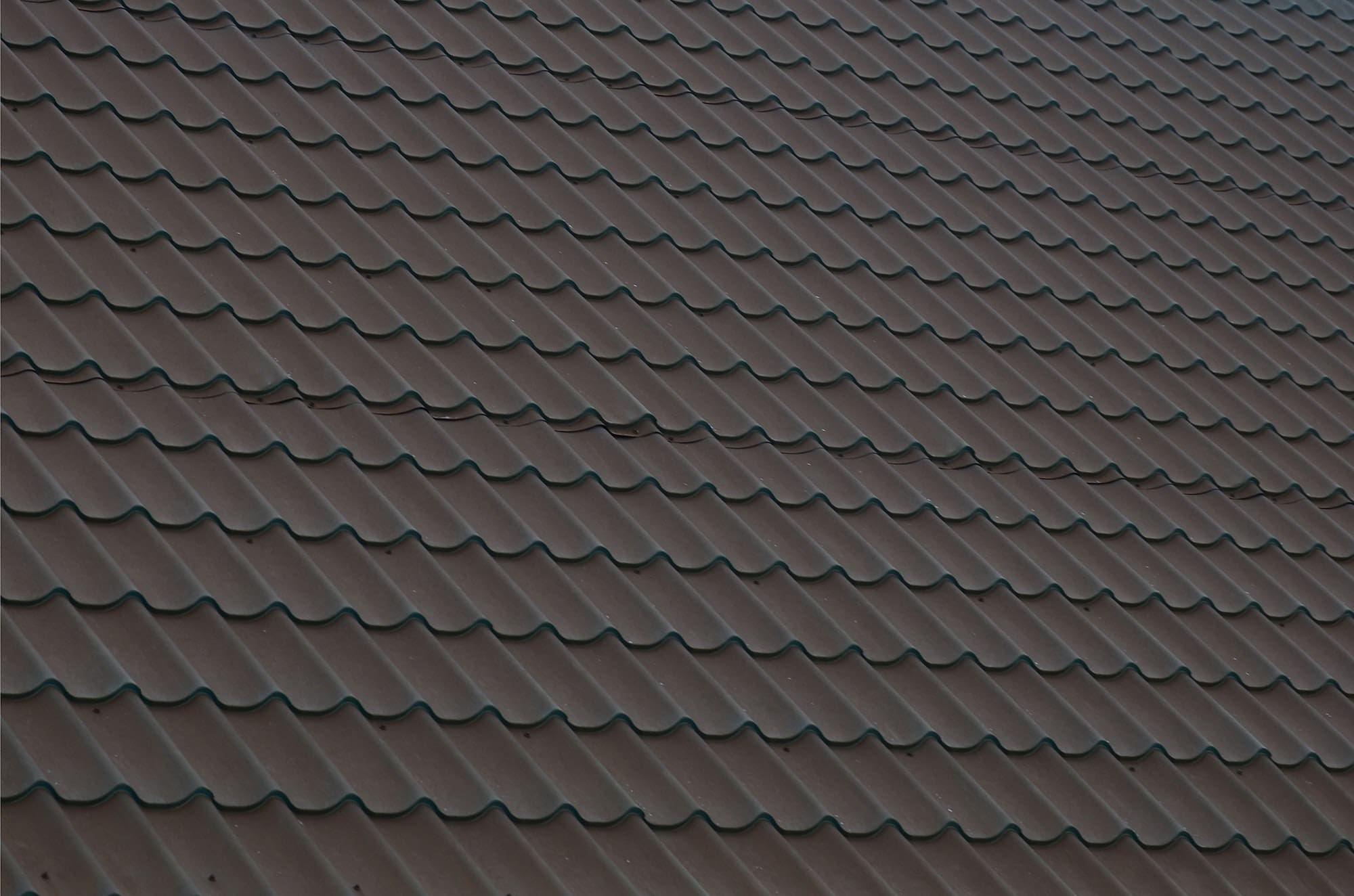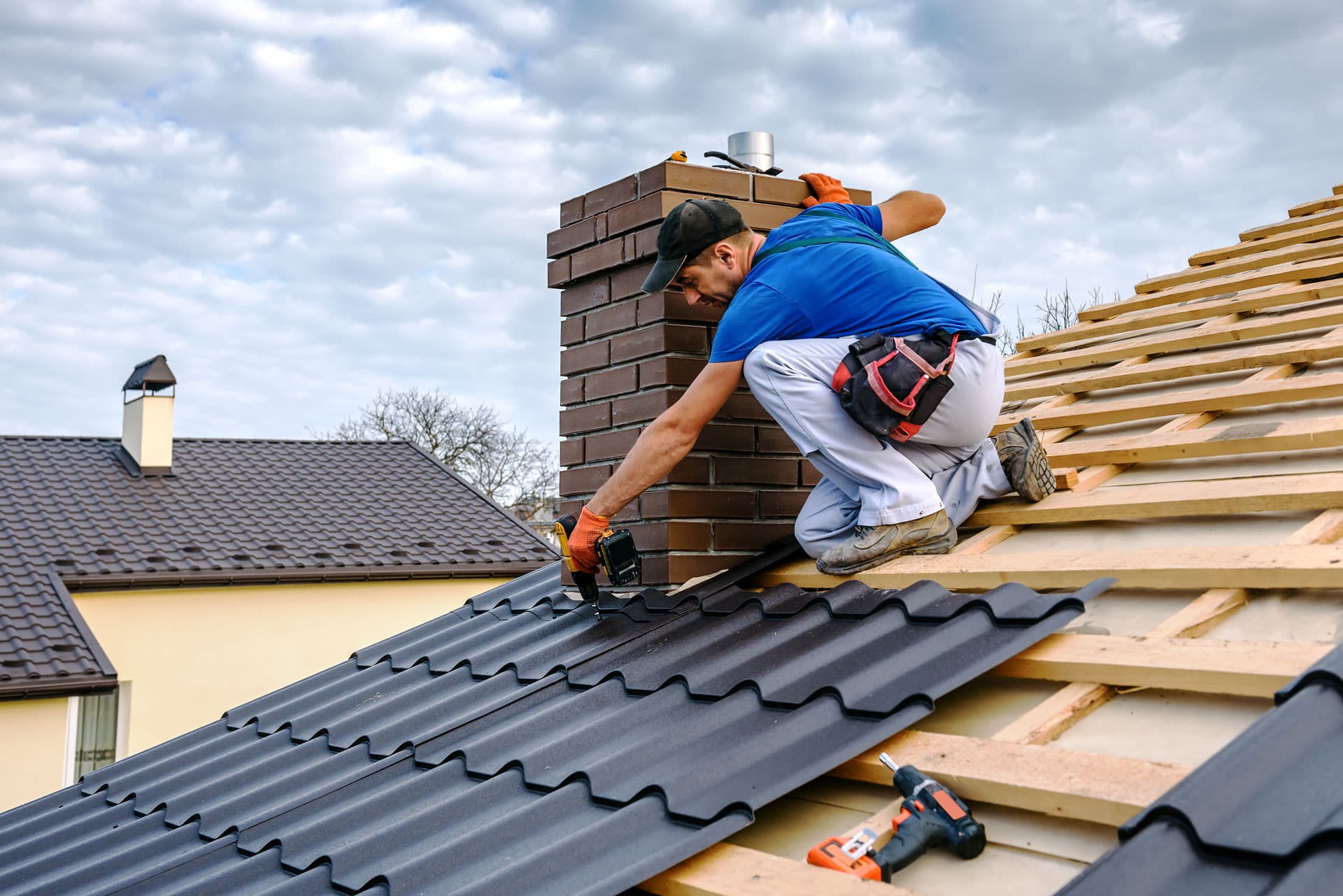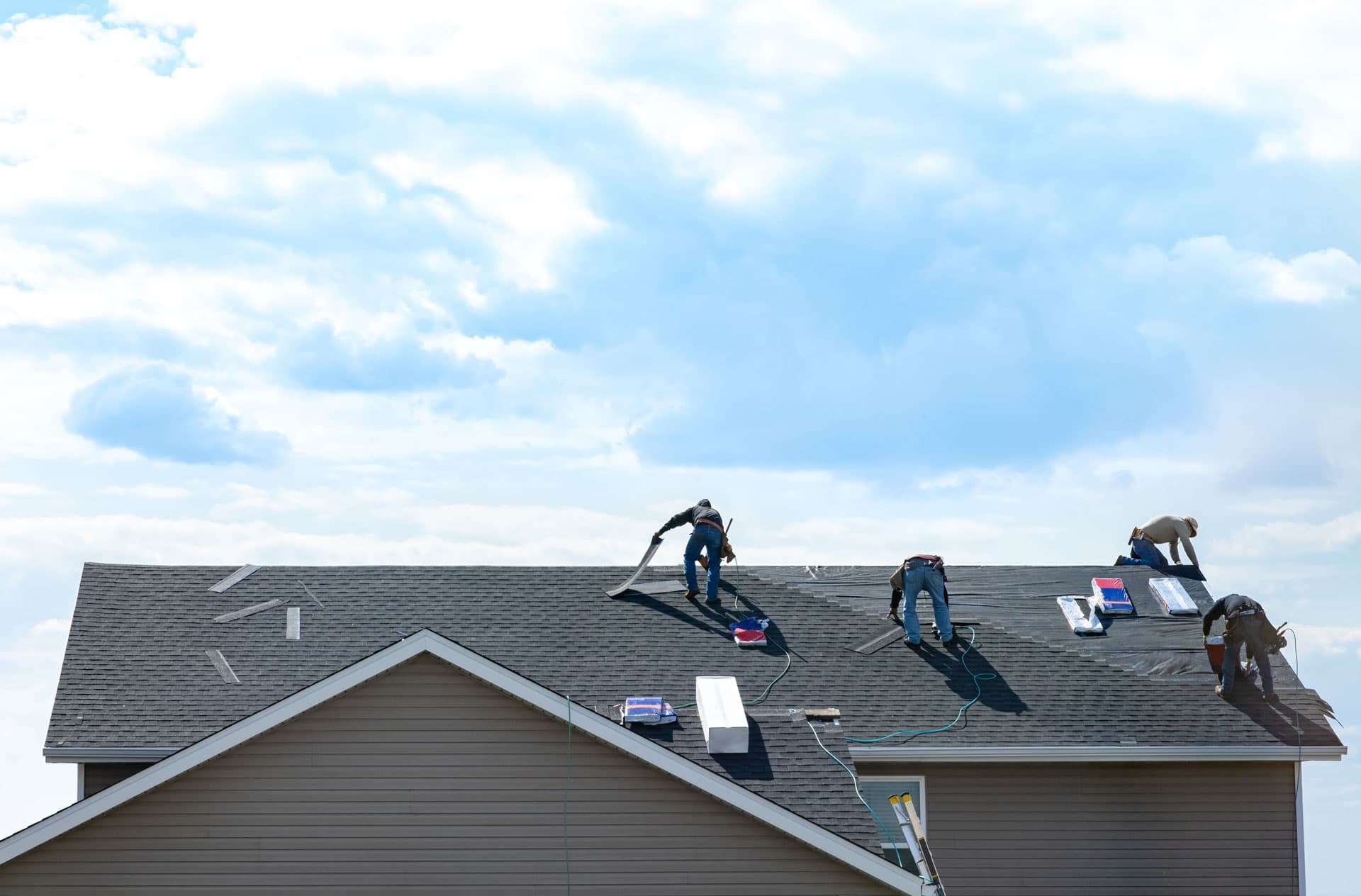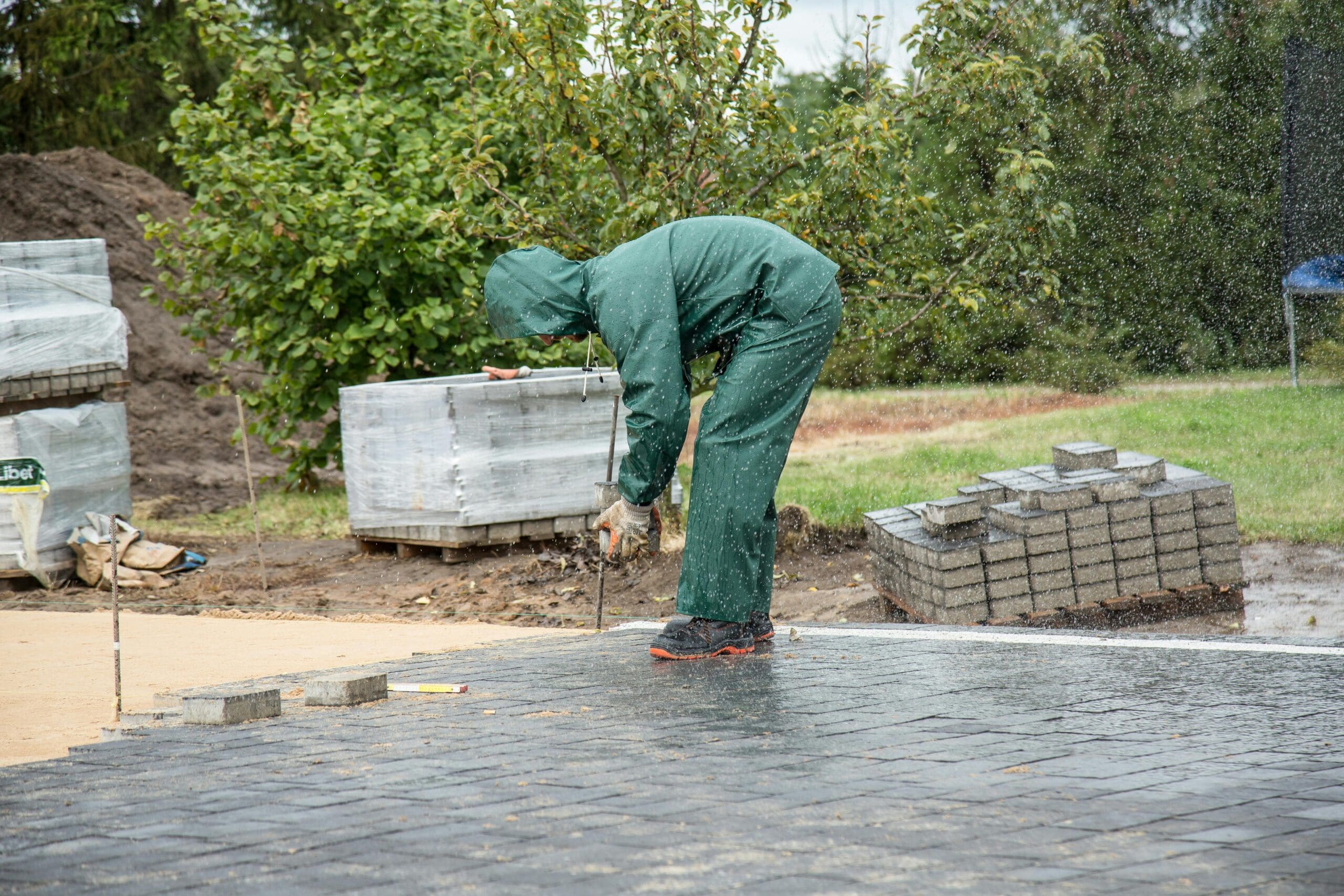We’ve done a ton of roofing inspections over the years and noticed that there are some terms that most property owners seem to recognize and understand. There are some others, however, that are usually met with a quizzical look.
Please consider this a simple guide to understanding all of the roofing terms you need to know whether you’re a roofing professional, property owner or just curious.
All the roofing terms you need to know…
Algae Growth: The growth of black or green algae on a roof is a fairly common occurrence, especially for portions of a roof that receive moisture but little sunlight.
Asphalt Shingle: One of the most common roofing types in the US due to its low upfront cost, easy maintenance and variety of looks. Can also be referred to as architectural shingle, three-tab shingle or just shingle.
Base Flashing: Usually an L-shaped flashing type that has one portion attached to the roof sheathing and the other portion installed around a vertical surface such as a chimney, dormer or parapet wall. Can also be called step flashing.
Base Sheet: Typically the bottom layer of a roofing system, installed directly onto the sheathing, that provides the majority of the waterproofing and weatherproofing protection.
Built-Up Roof: A roofing system where multiple layers asphalt and ply sheets are installed on flat and low-slope roofs.
Butt edge: The lower edge of the shingle that is most visible, most exposed to the elements and most susceptible to wear and tear.
Cap Sheet: The top layer of a roofing system that covers and protects the layers beneath it. These are available in multiple colors and finishes.
Caulking: A material frequently used to seal openings that would otherwise allow air or water to pass through. This is available in multiple colors and is usually applied with a caulk gun.
Class “A” Fire Resistance: The highest fire test classification for roofing as per ASTM E108 or UL790 that indicates that the roofing material is able to withstand severe exposure to fire originating from sources outside the building.
Class “B” Fire Resistance: A fire test classification that indicates the roofing material is able to withstand moderate exposure to fire originating from sources outside the building.
Class “C” Fire Resistance: A fire test classification that indicates the roofing material is able to withstand light exposure to fire originating from sources outside the building.
Clay Tile Roofing: A popular roofing material available in different colors and shapes.
Collar: Pre-formed metal flange placed over a vent pipe to seal the roof around the vent pipe opening. Can also be called a vent sleeve.
Collar Beam: A horizontal framing member installed between rafters on opposite sides of the roof or truss structure.
Composite Tile Roofing: Similar to clay tile roofing, however, each tile is made of a manufactured composite for added durability. Still available in different colors and shapes.
Counter Flashing: A type of flashing installed directly above base or step flashing to keep water from getting behind the base flashing.
Cricket: Commonly installed behind chimneys, crickets are a double-triangle structure that help divert water away from vertical surfaces. Can also be called a saddle.
Deck: The surface, installed over the supporting framing members, to which the roofing is applied. Usually made of plywood or OSB. Can also be called sheathing or decking.
Dormer: A framed window unit projecting through the sloping plane of a roof.
Downspout: A pipe for draining water from roof gutters. Also called a leader.
Drip Edge: A metal angle, usually L-shaped, that is installed along the edge of a roof and helps divert water away from the fascia.
Eave: The portion of a sloped roof that hangs over the building beneath it. Can be open or closed.
Felt: The most common and least expensive type of underlayment.
Flashing: Pieces of metal used to prevent water entering the building through any intersections or projections such as vent pipes, chimneys, adjoining walls, dormers and valleys.
Gable Roof: A simple, two-sided roof above a gable with a ridge often in the center.
Gambrel Roof: A type of roof containing two sloping planes of different pitch on each side of the ridge. The lower plane has a steeper slope than the upper.
Granules: The ceramic-coated, colored crushed rock that is applied to the exposed surface of asphalt roofing products. Common in both asphalt singles and modified bitumen.
Green Roof: A roofing system where the finished exterior material is made of living grass or vegetation.
Gutter: The trough that carries water from the eaves to the downspouts.
Hip Roof: A type of roof containing sloping planes on each of four sides.
Hip Shingles: Shingles used to cover the angle formed by the intersection of two sloping roof planes. Similar to ridge shingles.
Ice Dam: Condition formed at the lower roof edge by the thawing and re-freezing of melted snow on the overhang. Can force ponded water up and under shingles, causing leaks.
Impact Resistant Shingles: Shingles that are designed to be more resistant to impacts resulting from hail storms. Impact resistant shingles are typically tested and classified in accordance with UL 2218, and may be classified as Class 1 through Class 4, with Class 4 indicating the highest impact resistance classification.
Lap: To cover the surface of one shingle or roll with another.
Low Slope Application: Method of installing asphalt shingles and underlayment on roof slopes ranging from 2:12 to 4:12.
Mansard Roof: A type of roof containing two sloping planes of different pitch on each of four sides. The lower plane has a much steeper pitch than the upper, often approaching vertical.
Mastic: A high-grade construction adhesive commonly used to seal joints or holes in roofing.
Metal Roofing: A roofing material where the finished exterior is metal. Available in a variety of materials, colors and applications.
Organic Felt: An asphalt roofing base material manufactured from cellulose fibers.
Ply: A single layer of roofing. Similar to toilet paper, roofing materials can be one-ply, two-ply, etc.
Ponding: The accumulation of water after rainfall at low-lying areas on a roof that remains wet when other parts of the roof have dried. Often leads to discoloration and deterioration.
Racking: Roofing application method in which shingle courses are applied vertically up the roof. Although it allows for a quicker installation, racking is usually frowned upon for a variety of reasons.
Rafter: The supporting framing member immediately beneath the deck, sloping from the ridge to the wall plate.
Re-Paper: The process of removing the existing roofing material, replacing the felt or synthetic underlayment and then re-installing the existing roofing material.
Re-Roofing: The process of removing the existing roofing system and replacing it with a new roofing system. Can include new sheathing as well.
Ridge: The uppermost, horizontal external angle formed by the intersection of two sloping roof planes (the opposite of a valley).
Ridge Shingles: The shingles installed over the ridge, usually at the top of the roof.
Rise: The vertical distance from the eaves line to the ridge or the total height of the roof.
Roll Roofing: Asphalt roofing products manufactured in roll form and usually for flat and low-slope roofs.
Roof Rejuvenation: The process of restoring asphalt shingles through the application of a soy-based product and sealant.
Run: The horizontal distance from the eaves to a point directly under the ridge. One half the span.
Self-Adhering Shingle Underlayment: A self-adhering waterproofing underlayment designed to protect against water infiltration due to ice dams or wind driven rain.
Self-Sealing Shingles: Shingles containing factory-applied strips or spots of self-sealing adhesive.
Self-Sealing Strip or Spot: Factory-applied adhesive that bonds shingle courses together when exposed to the heat of the sun after application.
Shading: Slight differences in shingle color that may occur as a result of normal manufacturing operations.
Sheathing: The surface, installed over the supporting framing members, to which the roofing is applied. Usually made of plywood or OSB. Can also be called decking.
Shed Roof: A roof containing only one sloping plane. Has no hips, ridges, valleys or gables.
Slope: The degree of roof incline expressed as the ratio of the rise, in inches, to the run, in inches. For example, roof slope of 4:12 has a 4 inch rise every 12 inches of run.
Soffits: The finished undersides of the eaves.
Span: The horizontal distance from eave to eave. Usually a few feet longer than the length of the house.
Square: Also known as a roofing square, a unit of roof measure covering 100 square feet (10’ x 10’).
Starter Strip: Asphalt roofing applied at the eave that provides protection by an additional layer of material under the cutouts and joints of the first course of shingles.
Steep Slope Application: Method of installing asphalt shingles on roof slopes greater than 12” per foot or 12:12.
Step Flashing: Base flashing application method used where a vertical surface meets a sloping roof plane.
Synthetic Underlayment: An underlayment product that is typically manufactured using polypropylene and is used as an alternative to felt underlayment. Most will adhere to the sheathing for better waterproofing.
Tear Off: To remove an existing roofing system down to the sheathing.
Telegraphing: A shingle distortion that may arise when a new roof is applied over an uneven surface.
Truss: An engineered roof framing system where components are joined together before being hoisted onto the roof. Different from traditional framing where each individual framing member is attached on site.
UL Label: Label (created by Underwriters Laboratories) displayed on packaging to indicate the level of fire and/or wind resistance of asphalt roofing.
Underlayment: One of the most important parts of the roofing system, the underlayment is installed above the sheathing but beneath the finish roofing material and provides a last line of defense for waterproofing.
Valley: Ridge: The lowermost, horizontal external angle formed by the intersection of two sloping roof planes (the opposite of a ridge).
Valley – Closed: Similar to an open valley in the fact that the shingles on both sides of the valley are cut, but the underlying metal or felt isn’t visible.
Valley – Open: The easiest form of valley to install but also usually the worst. The shingles on each side of the valley are cut and metal flashing is installed down the center.
Valley – Woven: This is the preferred installation due to both the aesthetic appeal and durability of the roofing system.
Vapor Retarder: Any material used to prevent the passage of water vapor.
Vent: Any outlet for air that protrudes through the roof deck such as a pipe or stack. Any device installed on the roof, gable or soffit for the purpose of ventilating the underside of the roof deck.
Wood Rot: Damage done to the roof or truss framing members due to prolonged exposure to moisture.
Conclusion
We hope this roofing terminology helps you whether you’re dealing with a contractor, an inspector or looking to purchase the right materials yourself. We’ll update this roofing glossary by adding definitions in the future.
In the meantime, please let us know if there is anything we can do to help!







